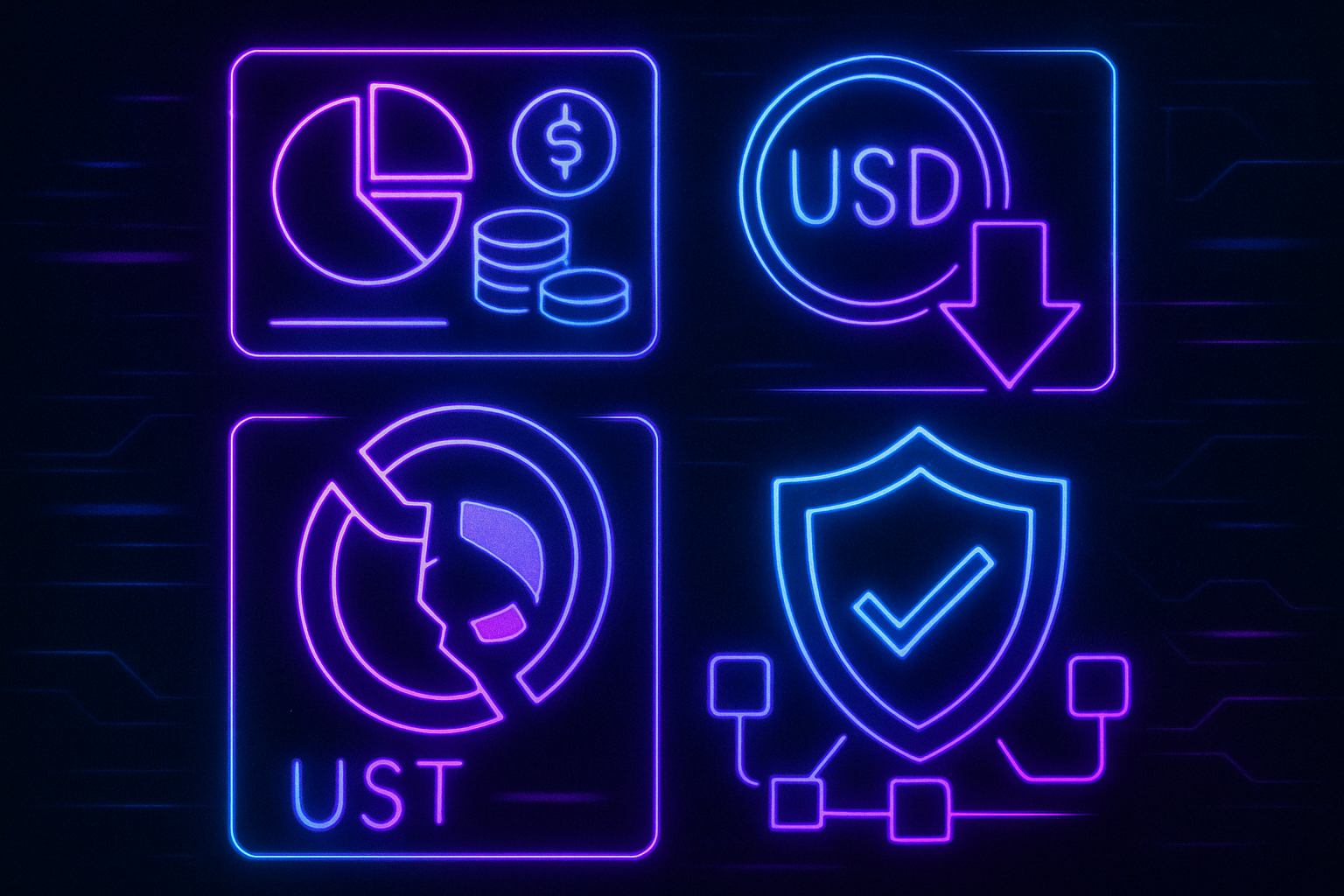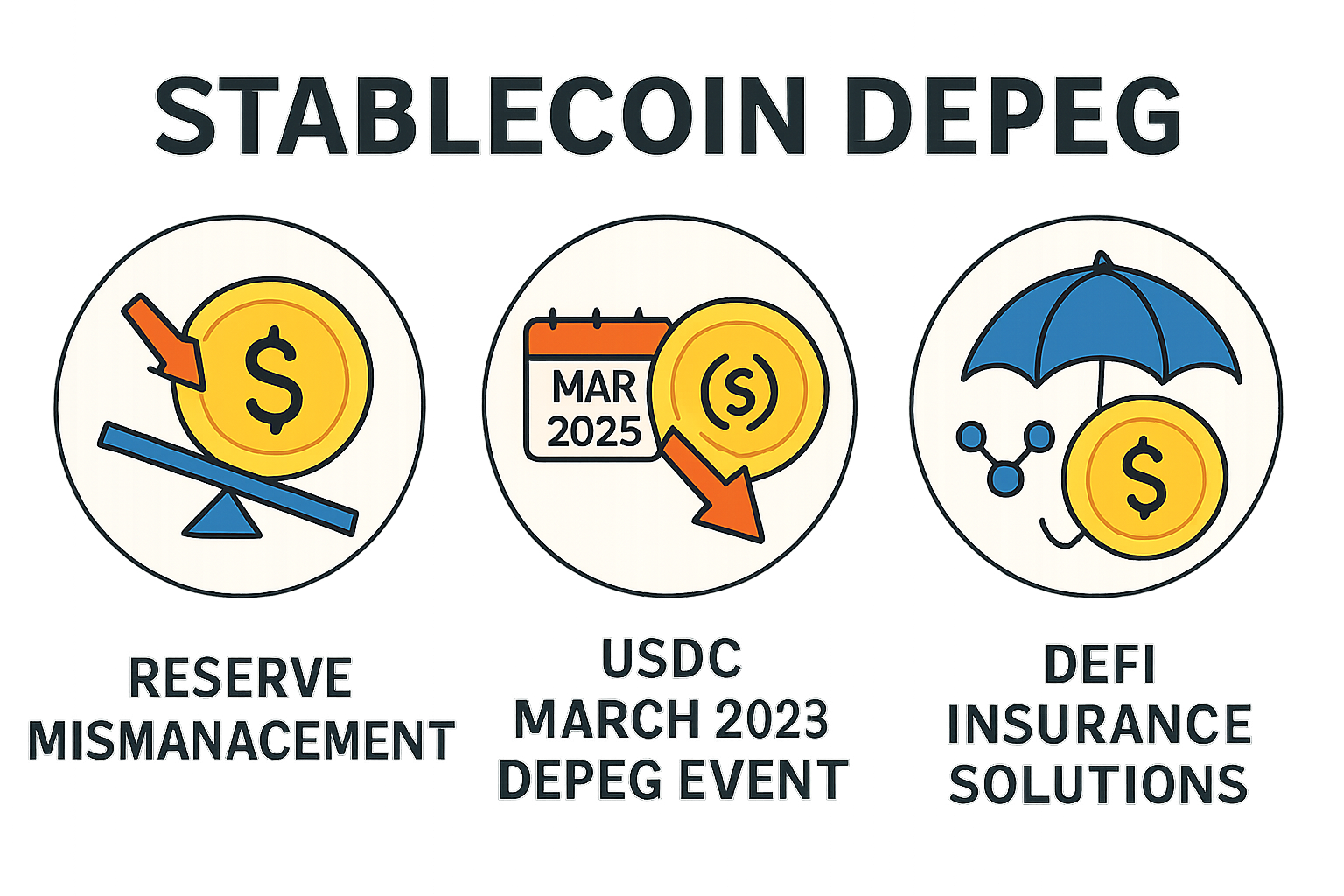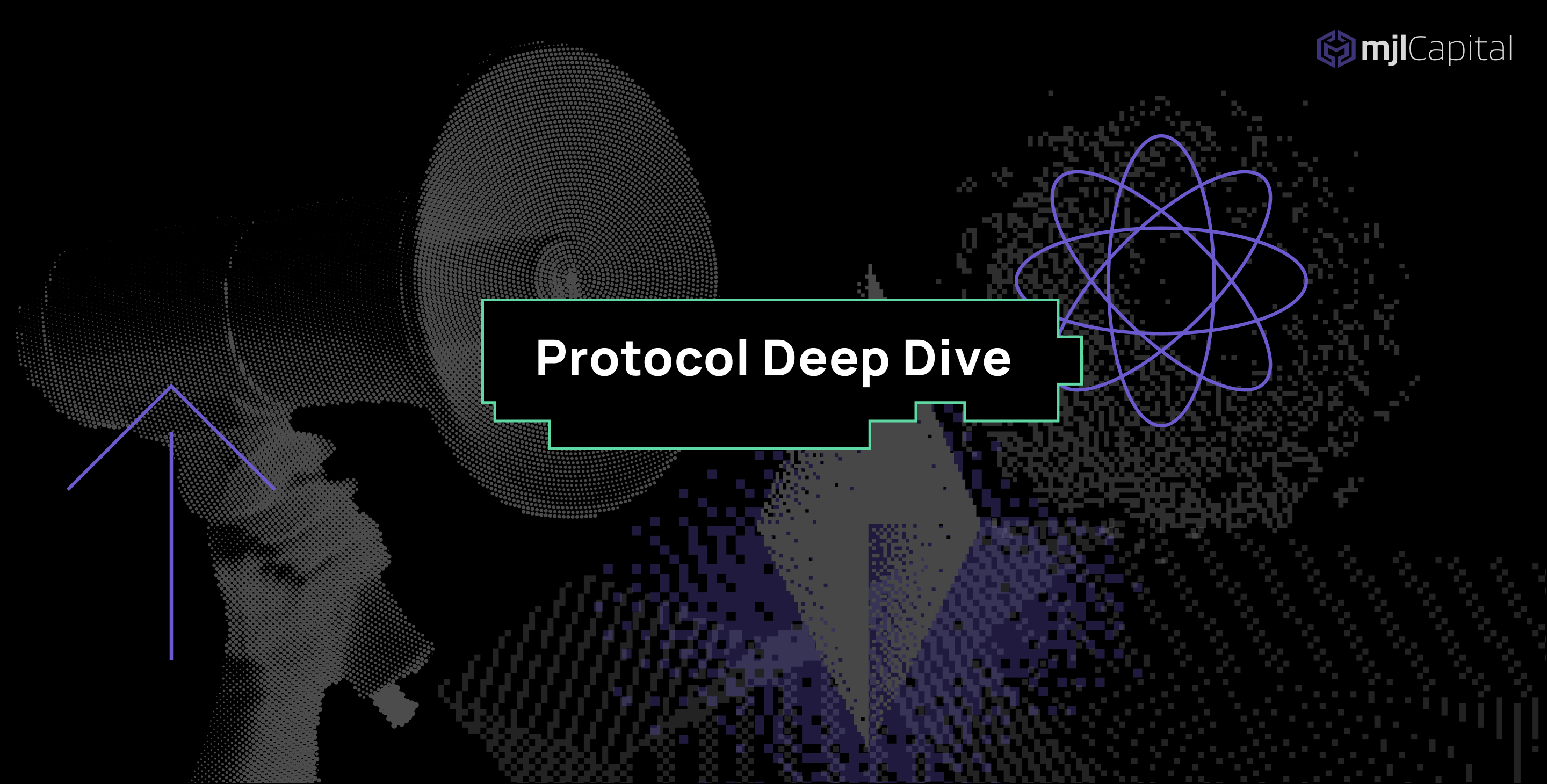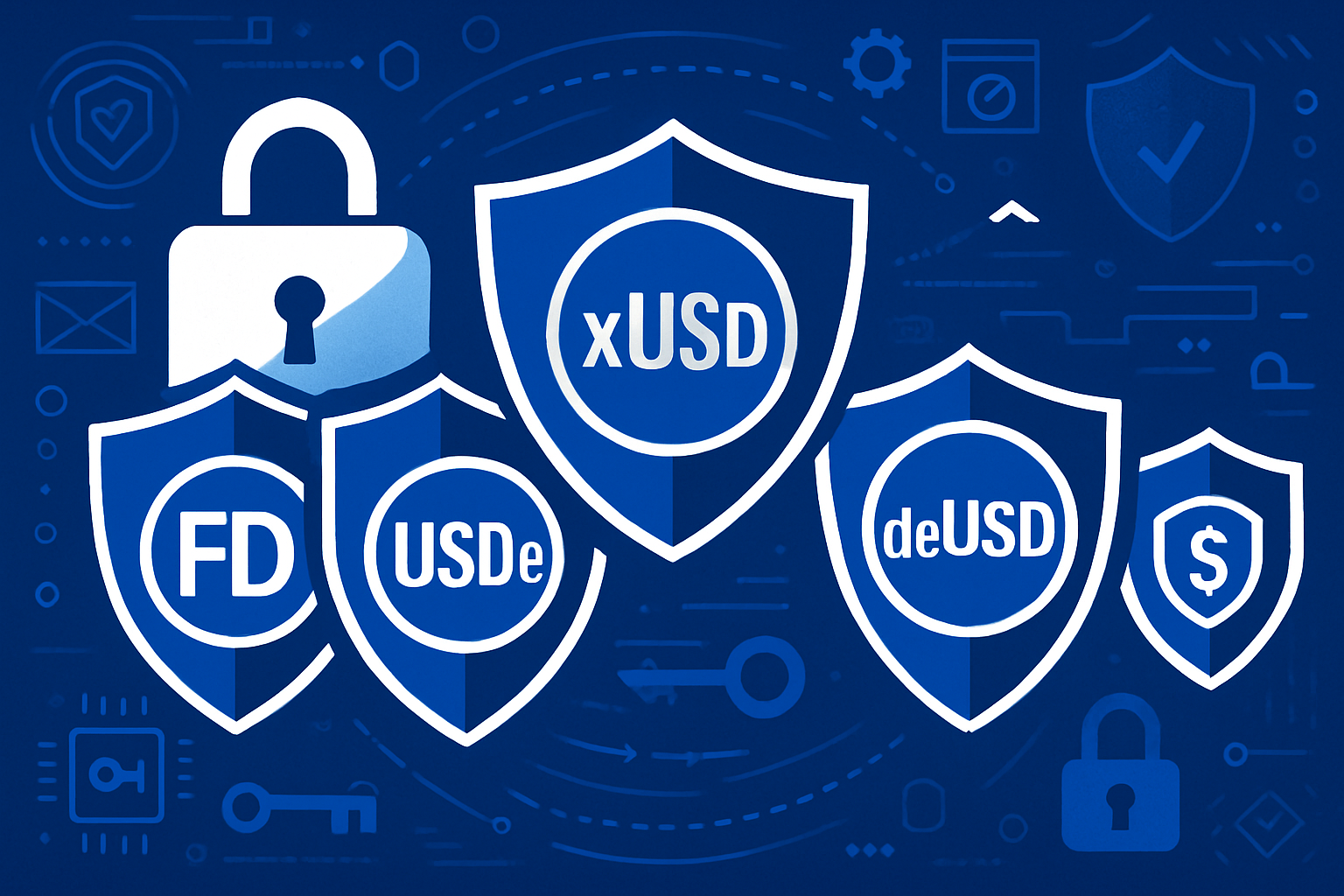
Stablecoins play a foundational role in the decentralized finance (DeFi) ecosystem by offering a digital asset that aims to maintain a steady value, typically pegged 1: 1 to the US Dollar. However, as recent history demonstrates, the promise of stability is not absolute. Stablecoin depegging events, where a coin’s price drifts away from its reference asset, can trigger cascading risks for DeFi users, protocols, and investors. To understand how to protect your assets, it’s essential to examine the top causes behind depegs, dissect notable incidents like the USDC depeg event, and explore actionable risk mitigation strategies.

What Drives Stablecoin Depegs? Key Causes Explained
The most common driver behind stablecoin instability is inadequate reserve management and collateralization. Stablecoins are only as robust as the reserves backing them. When issuers fail to maintain sufficient or properly managed reserves, especially in algorithmic or partially collateralized models, the risk of a depeg rises sharply during periods of market stress. The collapse of TerraUSD (UST) in May 2022 is a stark example: UST’s algorithmic design and undercollateralized reserves could not withstand mass redemptions, leading to a catastrophic loss of value.
Other technical and operational vulnerabilities can also undermine stability. Issues such as smart contract bugs or mismanagement of collateral assets expose stablecoins to both internal failures and external attacks. As S and P Global notes, “mismanagement of reserves and collateral can impact the stability of the stablecoin valuation and cause a depeg. ” This risk is amplified for tokens with opaque reserve disclosures or complex algorithmic mechanisms.
Key Causes, Events, and Strategies in Stablecoin Depegging
-

Inadequate Reserve Management and Collateralization: Stablecoins with insufficient or poorly managed reserves—such as algorithmic or partially collateralized models—are highly susceptible to depegging during market stress. TerraUSD’s collapse in May 2022 is a prime example, where the stablecoin lost its $1 peg due to unsustainable reserve mechanisms and cascading liquidations.
-

USDC Depeg Event (March 2023): In March 2023, Circle’s USDC temporarily lost its $1 peg after $3.3 billion of its reserves were stuck at Silicon Valley Bank. This event caused USDC to trade as low as $0.87 before recovering, highlighting the risks even for fully collateralized stablecoins when reserve access is compromised.
-

Utilizing DeFi Insurance and Depeg Protection Protocols: DeFi users can mitigate depeg risks by purchasing coverage products from platforms like InsurAce, Nexus Mutual, or Unslashed Finance. These protocols offer compensation in the event of a stablecoin losing its peg, providing an additional layer of protection for digital asset holders.
The USDC Depeg Event: Lessons from March 2023
No discussion about stablecoin risk management would be complete without examining Circle’s USDC depeg event in March 2023. When $3.3 billion of USDC’s reserves became inaccessible at Silicon Valley Bank following its sudden collapse, confidence evaporated almost overnight. As panic spread across crypto markets, USDC traded as low as $0.87 before eventually regaining its peg after regulatory intervention and assurances from Circle.
This incident highlighted several critical lessons:
- Counterparty Risk: Even fiat-backed stablecoins are exposed to traditional banking failures.
- Market Sentiment Amplifies Volatility: Fear-driven redemptions can quickly push prices far below $1, triggering liquidations across DeFi protocols reliant on stablecoin collateral.
- The Importance of Transparency: Rapid communication from issuers is crucial for restoring trust during crises.
Risk Mitigation Strategies: How DeFi Users Can Protect Themselves
Given that no stablecoin is immune to instability, prudent risk management is essential for all participants in DeFi. One highly effective approach is utilizing DeFi insurance and depeg protection protocols. Platforms such as InsurAce, Nexus Mutual, and Unslashed Finance offer specialized products that compensate users if a covered stablecoin loses its peg beyond predefined thresholds. These services have become increasingly popular as users seek ways to hedge against sudden losses triggered by events like the USDC incident or systemic failures akin to TerraUSD.
For a detailed exploration of hedging strategies against stablecoin depegs, including real-world case studies, see this guide on managing USDT and USDC depeg risks.
DeFi users should also diversify their stablecoin exposure and avoid concentrating large positions in a single asset or protocol. Relying exclusively on one stablecoin, especially those with opaque reserve structures or experimental mechanisms, can expose portfolios to outsized risk if a depeg occurs. Instead, consider holding a basket of reputable, transparently managed stablecoins and periodically reviewing their backing and audit reports.
Even with robust insurance coverage, understanding the technical underpinnings and reserve management policies of stablecoins is vital. Users should scrutinize whether a stablecoin is fully backed by cash and equivalents or if it relies on more volatile collateral. Algorithmic models that eschew traditional reserves in favor of complex mint-burn dynamics have repeatedly demonstrated heightened vulnerability to market shocks, TerraUSD’s 2022 collapse being the most prominent cautionary tale.
Comparing DeFi Insurance Options for Stablecoin Depeg Events
The growing popularity of DeFi insurance reflects the community’s desire for proactive risk management. Leading providers like InsurAce, Nexus Mutual, and Unslashed Finance each take a slightly different approach to covering depeg events:
- InsurAce: Offers broad depeg cover across major stablecoins with transparent claims processes.
- Nexus Mutual: Underwrites bespoke policies where members vote on claims, fostering decentralized governance.
- Unslashed Finance: Provides pooled risk coverage with rapid payouts for qualifying events.
When evaluating these options, consider factors such as claim thresholds (e. g. , how far below $1 the price must fall), coverage duration, exclusions, premium costs, and payout speed. For up-to-date comparisons and tips on selecting appropriate protection products, refer to this comprehensive DeFi insurance guide.
Key Takeaways for Stablecoin Safety in DeFi
The persistent risk of stablecoin depegging means that vigilance is always warranted. Whether triggered by inadequate reserve management (as seen with TerraUSD), unforeseen counterparty failures (like the USDC/SVB crisis), or technical faults, each event underscores the importance of diversified holdings and active risk mitigation strategies. The expanding landscape of DeFi insurance provides users with valuable tools to hedge against these risks, but due diligence remains critical.
If you’re actively using stablecoins in your portfolio or as collateral within DeFi protocols, make it a habit to monitor reserve disclosures, audit results, and the latest market sentiment around major tokens. Combine this research-driven approach with targeted insurance and diversification for optimal protection against future volatility.








